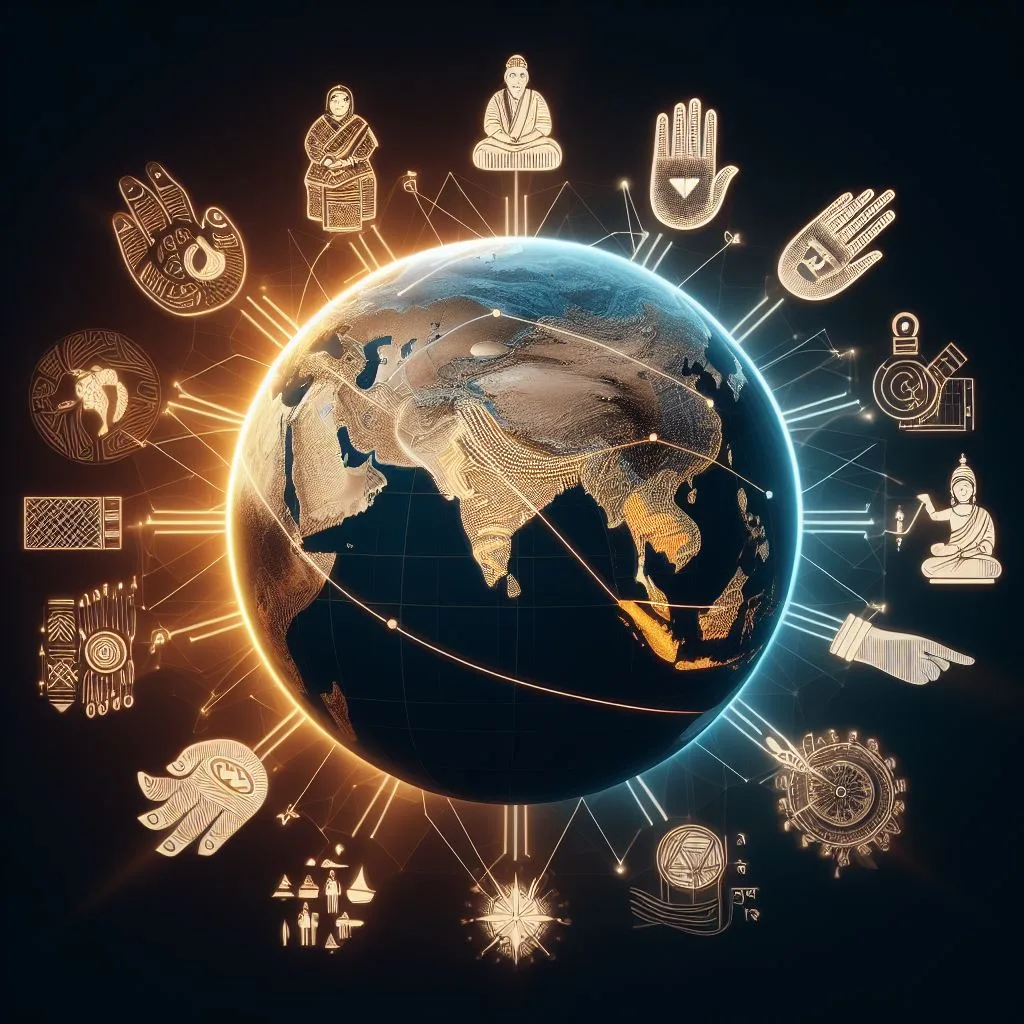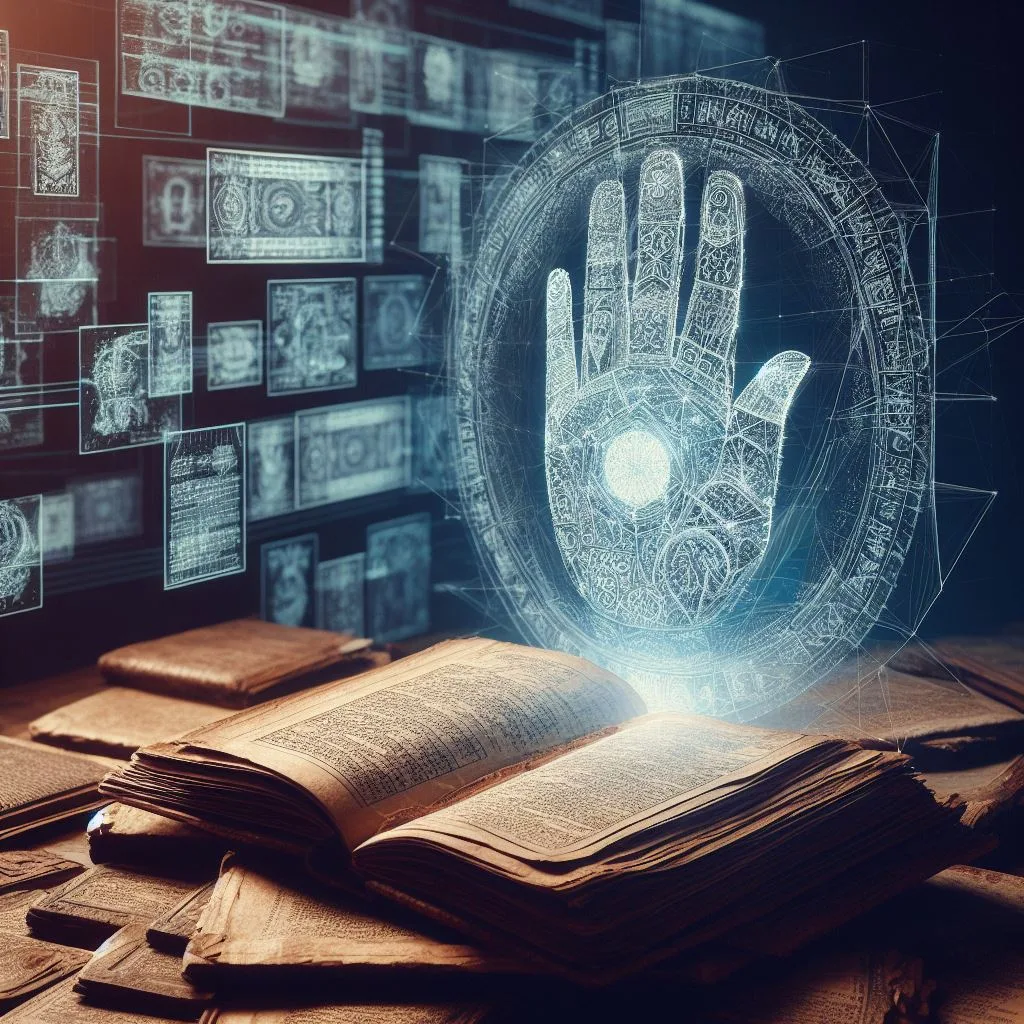
The Ancient Enigma: Palmistry’s Roots
Despite its ancient roots, palmistry sails through an ocean of historical ambiguity and varied cultural interpretations. Throughout its historical voyage, palmistry has oscillated between being revered as a sacred art form and dismissed as superstitious belief.
article by Nora Pennington
The historical perspective on palmistry is generously sprinkled with tales of royal consultations and sage advice, showcasing that it has not merely been a tool for the common folk but a respected practice even within the highest echelons of societal structures. These myriad historical instances offer a fascinating dichotomy where palmistry was both celebrated and vilified, finding a place in the royal courts as well as being marginalized by various intellectual and religious movements throughout different epochs.

But have you ever paused to wonder, where did palmistry begin? The answer takes us back to the spiritual and mystic land of ancient India, often known as Bharat.
The Divine Inception
Palmistry finds its origin in the sacred ancient texts of Hinduism, often described as the voice of the gods themselves. It is believed to have been revealed by Lord Shiv Ji, who presented this wisdom as a part of the broader Samudrik Shastra. The practice emerged as an answer to Maa Parvati’s quest for a system that could help humans navigate their challenges and uncertainties, given their inability to see the future like the gods. Thus, palmistry was born.
Resilience in the Face of Time and Tide
The rich tapestry of palmistry saw significant losses throughout history due to invasions and colonization. Yet, despite the destruction of many ancient texts, a few precious pieces remain, digitally preserved by the Indian government. In these fragments, we find invaluable insights into Samudrik Shastra and Palmistry, as mentioned in revered scriptures like Ramayan, Garud Puran, Bhavishya Puran, Narad Puran, and Skand Puran.
Palmistry Popularity Across Cultures & Continents
Palmistry transcended cultural boundaries and became a cherished art in various civilizations. In China, it was considered a valuable tool for understanding an individual's health and fortune. In Europe during the Middle Ages, palmistry was practiced alongside astrology and was even employed by royalty to make important decisions.

An Art or a Science?
While often conceptualized simply as an interpretation of palm lines, palmistry, in its authentic expression, embodies far more than mere physical observations. It hinges deeply on the spiritual and metaphysical, offering insights that are believed to be divinely encoded into the very essence of our beings.
Proponents express that these lines, in their myriad forms and trajectories, encapsulate not merely the potential path of our life but are reflective of the karmic journey of the soul through various lifetimes. It becomes a dialogue, not just with our potential future but with our past and the eternal essence that transcends temporal boundaries.

Though palmistry often garners skepticism, it has survived the test of time and scrutiny, weaving its mystical spell around those willing to open their minds. Whether you consider it an art or a science, its enduring allure is undeniable.
The Interplay of Palmistry and Personal Transformation
Palmistry, beyond a predictive tool, can serve as a mirror, reflecting aspects of our nature, potentialities, and challenges that might otherwise remain obscured. When approached with openness and reflection, the insights garnered from a palm reading can catalyse personal transformation and evolution. These seemingly mystical lines might reveal tendencies toward certain challenges or unveil latent potentials, offering a unique perspective from which to embark upon a path of personal development and self-realization.
Concluding the Journey: An Ongoing Exploration
In the enthralling journey of understanding palmistry, we traverse not merely through lines and interpretations but through history, belief systems, and the ever-pervasive human quest towards understanding the unknown. From its divine inception to its global dispersion, palmistry remains a testament to the human spirit’s insatiable curiosity and the ceaseless pursuit of understanding our place within the cosmic tapestry.
Whether viewed through a lens of skepticism or embraced with wholehearted belief, the art of palmistry undeniably holds a space within our collective consciousness, continuing to invite explorers to ponder, reflect, and journey within the mystical realms of self and future.

Palmistry, with its roots in ancient India, has a rich history that spans thousands of years. Its journey from the mystical land of sages to becoming a worldwide phenomenon is a testament to its enduring appeal. Whether you seek predictions about your future or insights into your character, palmistry continues to provide a fascinating glimpse into the mysteries held within the palms of our hands.
In weaving through the intricate narratives and wisdom of palmistry, we continue to explore, question, and seek, maintaining a dialogue that spans across epochs and life journeys, perpetually intertwining our paths with those who sought understanding in the lines of their hands in ancient times, and those who will do so in the future epochs to come. And so, the journey continues.
Published: 10/12/2023
Modified: 10/23/2023
More predictions
Come back here soon to learn more about yourself and your future





